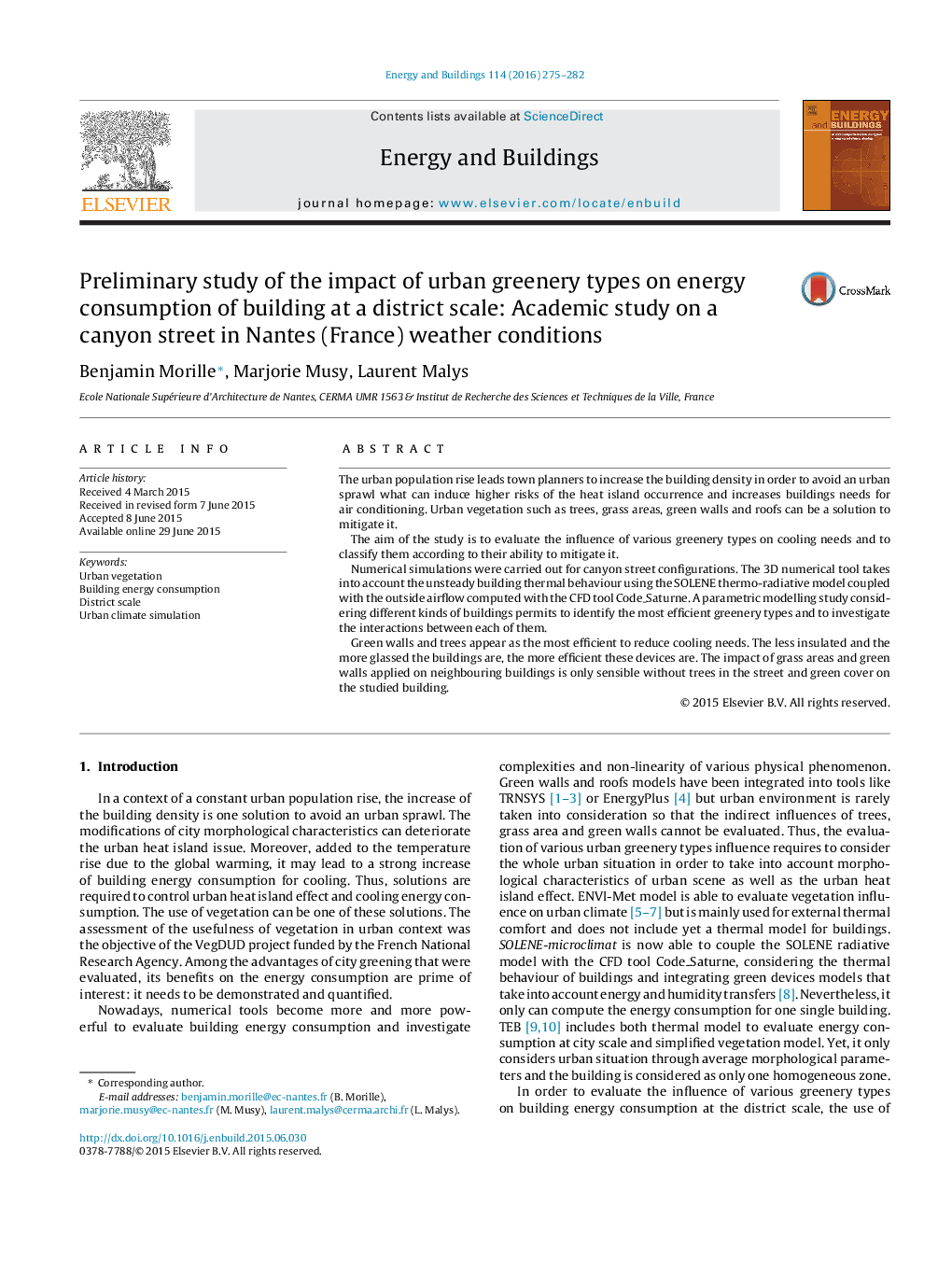| Article ID | Journal | Published Year | Pages | File Type |
|---|---|---|---|---|
| 262143 | Energy and Buildings | 2016 | 8 Pages |
•Four greenery types are compared focusing on their impact on cooling needs.•Urban environment and climate are taken into account in the numerical simulations.•Outside airflow computed by CFD tool is coupled with the SOLENE-microclimate model.•The greenery types interactions are studied through the parametric modelling study.•Standings of greenery types efficiency are provided for four different kinds of buildings.
The urban population rise leads town planners to increase the building density in order to avoid an urban sprawl what can induce higher risks of the heat island occurrence and increases buildings needs for air conditioning. Urban vegetation such as trees, grass areas, green walls and roofs can be a solution to mitigate it.The aim of the study is to evaluate the influence of various greenery types on cooling needs and to classify them according to their ability to mitigate it.Numerical simulations were carried out for canyon street configurations. The 3D numerical tool takes into account the unsteady building thermal behaviour using the SOLENE thermo-radiative model coupled with the outside airflow computed with the CFD tool Code_Saturne. A parametric modelling study considering different kinds of buildings permits to identify the most efficient greenery types and to investigate the interactions between each of them.Green walls and trees appear as the most efficient to reduce cooling needs. The less insulated and the more glassed the buildings are, the more efficient these devices are. The impact of grass areas and green walls applied on neighbouring buildings is only sensible without trees in the street and green cover on the studied building.
